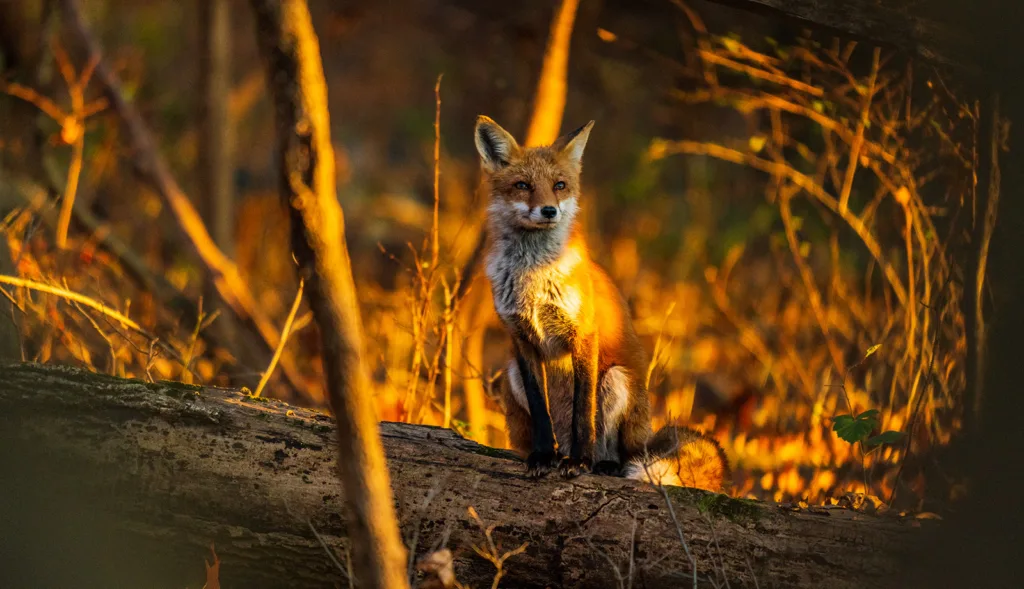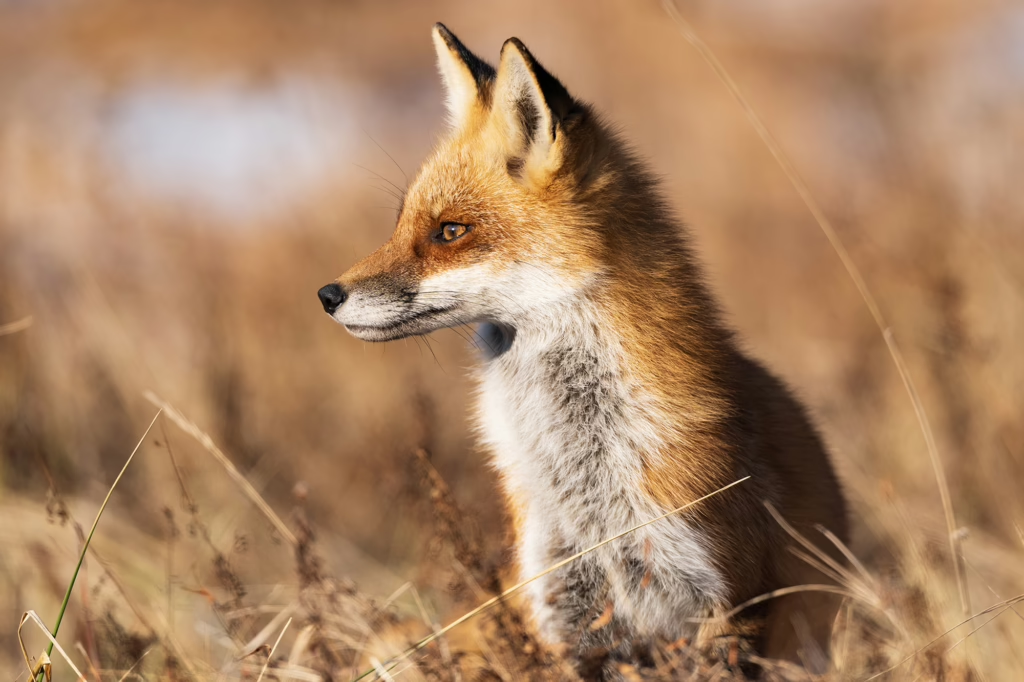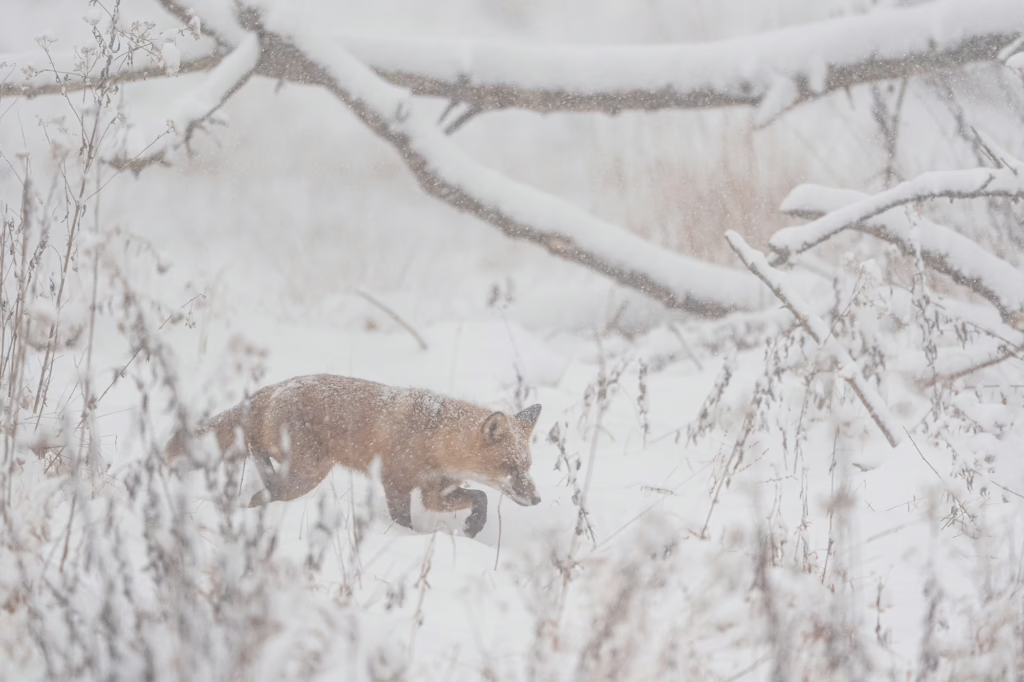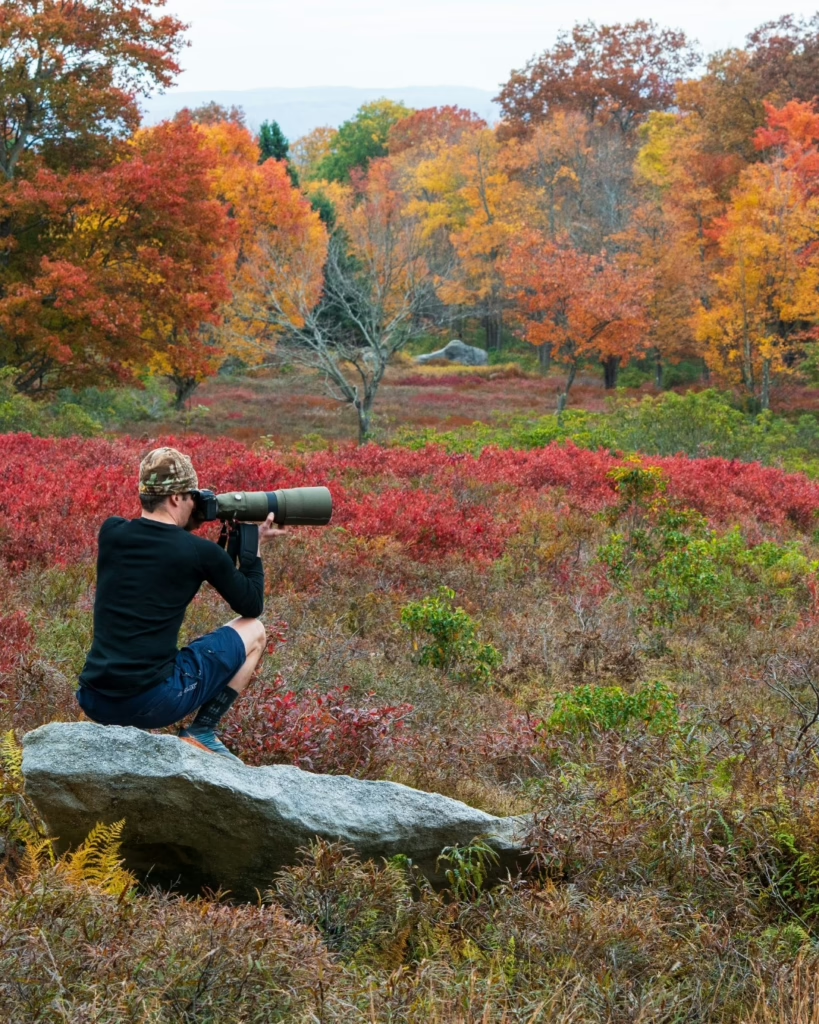15 WILD Fox Facts that Might Amaze You
So, you want to know more about the wily red fox who calls South Mountain home? While the red fox is considered common in our neck of the woods, there’s a world of lesser-known facts that make this creature both curious and fascinating. Read on for 15 wild fox facts that might amaze you!
Photos by Steve Miller
1: Foxes aren’t bothered by the cold.
Both a thick coating of snow and the fox’s thick coat will keep our fox friend warm during the winter months. Burrowing in a blanket of snow might not sound like the warmest option, but to a fox, a whiteout makes for great insulation. Fluffy, powdery snow blocks its body heat and heat from the ground from escaping into the air above due to the large pockets of stagnant air.
2: Foxes don’t hibernate.
While many of us hikers and runners are hibernating, our native foxes remain active in our local ecosystems.
3: Foxes sleep in dens up to 8 ft deep.
For an average sleep time of 9 hours per day, foxes burrow in slopeside dens.
4: Foxes have extraordinary hearing.
They can hear noises from miles away that go unchecked by human ears, sounds like a vole scurrying in the brush or burrowing underground.
Photos by Steve Miller
5: Foxes have a varied diet.
Foxes are actually omnivores! Yes, they are apex hunters, eating rabbits, hares, and other small mammals, as well as birds and bugs. But they also eat fruit and are even known to enter home gardens to grab a quick snack.
6: Research suggests foxes decrease the spread of Lyme Disease.
Because of the presence of fox populations, small mammals like mice are more likely to hide away and less likely to carry around ticks. This reduces the rate at which ticks become infected with the bacteria that causes Lyme disease.
7: Foxes can make over 40 different vocalizations.
To put it into perspective, humans have 3 and 1/3 octaves. Foxes have five octaves that allow them to produce 40 different vocalizations.
8: The species name for red foxes is Vulpes vulpes.
The species native to, the Lehigh Valley and Lehigh River watershed, Wildlands land-protection footprint, is Vulpes vulpes. That’s Latin for fox.
9: A group of foxes is called a Skulk.
The fox is a solo hunter, but the keen senses of scent and sound it employs to stalk its prey, have inspired the language we use to talk about their behavior and describe foxes as group:
Skulk
Verb: • to move in a stealthy or furtive manner
• to hide or conceal something (such as oneself) often out of cowardice or fear or with sinister intent
Noun: a group of foxes
10: Foxes live in many ecosystems.
Vulpes vulpes, our species of fox specifically, inhabit deserts, tundra, woodlands, meadows, pastures, and suburbs.
11: Foxes have adapted to urban environments.
While they have adapted to the urbanized landscape and live close to cities and nature trails, they are not domesticated creatures. Maintain a safe distance and do not approach wildlife like foxes.
Most importantly, do not feed the foxes. If fed by humans, foxes will lose their ability to hunt and therefore lose their ability to survive.
12: Their tracks don’t have claws.
What’s the difference between wild and domesticated canine pawprints? Foxes walk with their claws retracted, whereas our best hiking buddies’ claws appear in their tracks.
From left: fox prints, dog print
13: Foxes are social creatures.
Vixens, female foxes, are especially known to groom, guard, and play with their kin.
14: They are the most widespread land carnivores in the world.
Their lineages date back to over 400,000 years ago, and red foxes inhabit most of North America, Europe, Asia, and northern Africa.
15: Our red foxes evolved around 130,000 years ago.
North American red foxes arose from an ancestry that had been isolated from others worldwide during the last glaciation. For the last half a million years, our red foxes have reproduced independently, isolated by glaciers.
Notes from the Fox Photographer
Tucked away at South Mountain Preserve, a natural predator is on the prowl, eyeing up a vole. Little does the fox know that lying even lower is nature and wildlife photographer Steve Miller. You may recognize this photo of his; it was the winner of our fall 2023 photo contest.

Miller is well accustomed to waiting it out when it comes to amazing wildlife shots like this, and he says he could smell this photo op from a mile away. The whiff he caught smelled kind of like a skunk.
“Foxes are not as pungent; they don’t smell as sharp or harsh as a skunk. They smell similar, but just not as intense, says Miller.
Like the fox, Miller activates multiple senses to increase his chances of framing something super wild.
“A bunch of the fox pictures that I’ve taken, I knew the fox was coming because I either smelled it or I heard birds giving it away,” says Miller. “It’s like having an extra set of eyes and ears.”
“So, why are the blue jays making all that sound? Why are the Canada geese making the noises they are making? That’s a clue to stop what you’re doing and really try to pay attention. Sometimes even a red squirrel or a gray squirrel will chatter, and they’re doing it for the same reasons. They see a threat.”
A FOX PHOTO SPEAKS A THOUSAND WORDS (ABOUT CONSERVATION)
In an ever-urbanizing Lehigh Valley, having access to mature forests with a diversity of oaks, tulip poplars, warblers, frogs, and much, much more is more important than ever. The work of wildlife and nature photographers like Miller remind us that it’s wild out here, and it inspires us to live connected with nature.
South Mountain offers a 400+-acre outdoor retreat for neighbors in the Lehigh Valley, even if it means just getting out for half an hour after work.
“We often forget or don’t realize that there’s this entire self-sustaining ecosystem that’s alive out here all the time. It’s been going on long before we were here. I just find it incredibly fascinating, and I live to try to capture that to share it with other people so then they can appreciate it more,” says Miller. “Because when people care more about what’s around them, they don’t tend to destroy it. Their choices are changed because of it.”
Stay up to date with what’s happening out here at Wildlands Conservancy! Get stories like this in your inbox by joining our newsletter.
JOIN OUR NEWSLETTER
RELATED POSTS
-
Why Did the Turtle Cross the Road? Dos & Don’ts for Migration SeasonTurtle migration season is upon us! This means you might see these native and wild amphibians in some unexpected places. Knowing how to interact with turtles making their treks is important for them, as well as all the other species living in connection with them, here in the Lehigh River watershed. Here are some helpful […]
-
Native Wildflower Meadow: Educating Young Minds & Regenerating BiodiversitySouth Mountain Preserve is literally seeding new ideas and educating a tomorrow for our special part of the planet. Wildlands’ preserve managers are underway with establishing a 3.3-acre native wildflower meadow in the northwest area of South Mountain Preserve, near the Wilderness Trail. Not only will the wildflower meadow provide sustenance to native pollinators and a home for wildlife, but […]











